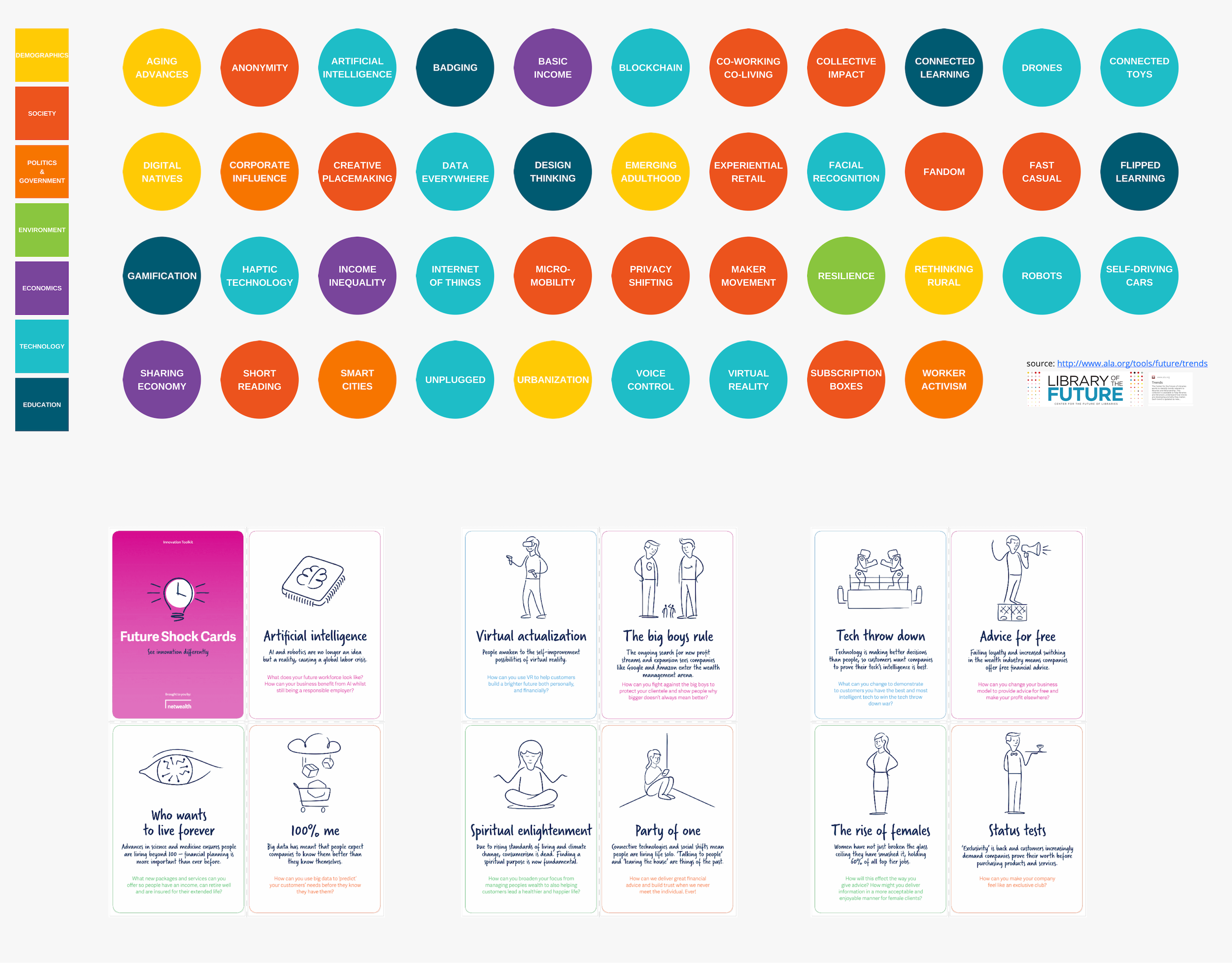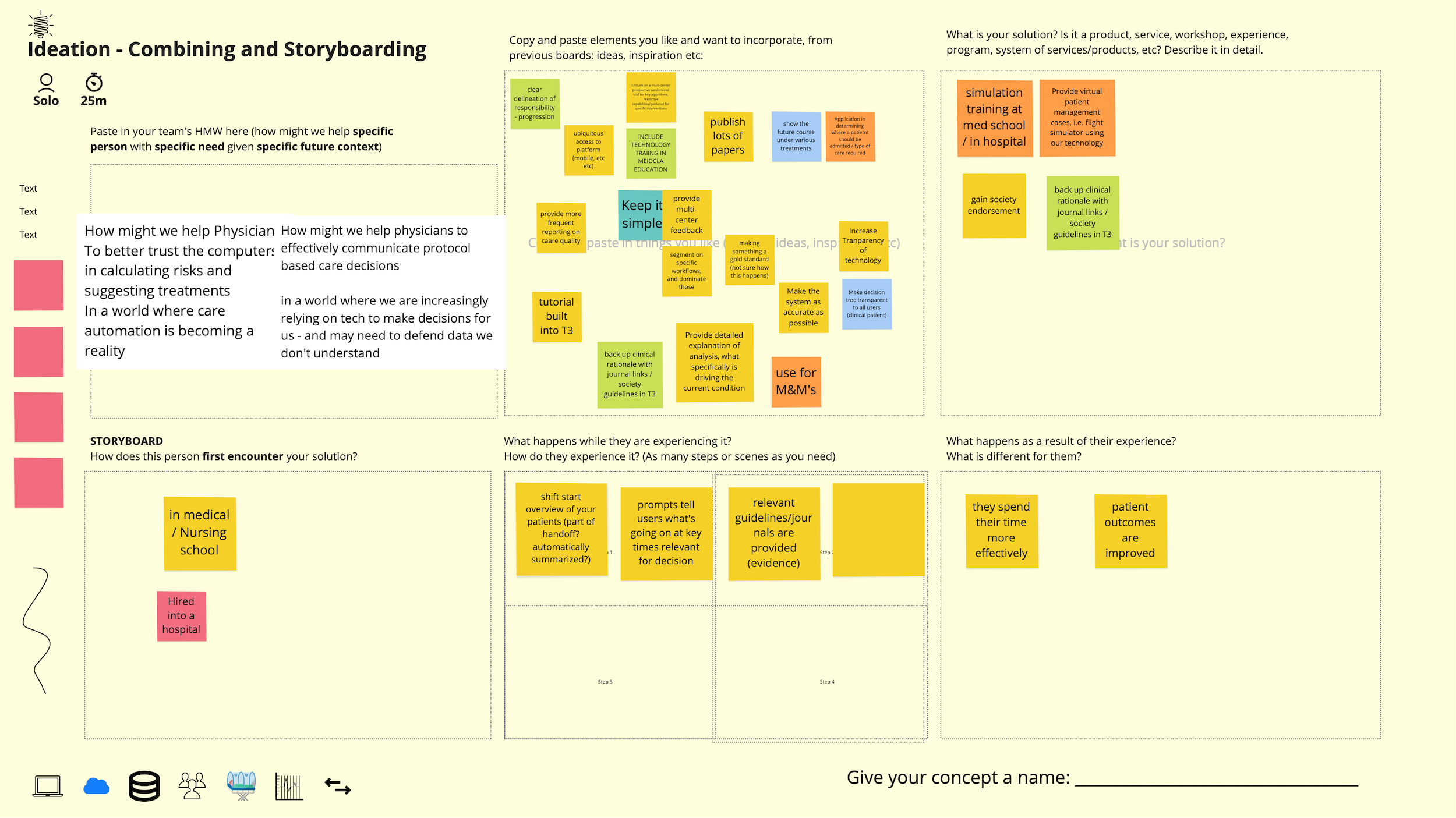
Mapping — and designing for — the future of clinical ICUs
with Etiometry, Inc.

Workshop planning and customization
Facilitation and coachingOverview
Conceptualized, planned, and facilitated a 9-person remote Speculative Design workshop for a data-driven medical technology startup. Using methods from speculative design, strategic foresight, and design thinking, we analyzed the past and present, made projections about healthcare needs of next decade future, and conceptualized product directions that could help address those needs.
Context
Etiometry, Inc. is a medical technology startup changing the way healthcare clinicians make care decisions, via a platform that aggregates data from multiple sources (such as ICU devices, vital signs, lab results) visualizing trends for clinicians in one place. Etiometry develops proprietary algorithms that help determine patient risk based on human physiology, helping clinicians to make better care decisions, faster.
Challenge
At the start of a six-month design strategy project, I suggested including an ideation workshop based on our UX research phase. Approaching the workshop, we checked in and pivoted the intent from a “micro-design-sprint” on a discrete set of features, into a broader visioning workshop for the long-term future of their platform.
The objective was to get the team to step back from the everyday and think “outside the box to the future” — forgetting for a moment their existing product, and anticipating what needs ICU clinicians might have 10-20 years down the road.
Planning
Prework
With a relatively short workshop, I collected themes and opinions beforehand to more quickly jump into the flow, using Google Forms to ask a few simple questions: “what major trends, in your view, have affected the last 10 years in healthcare? What challenges does healthcare face today? What trends will shape the next 10 years in healthcare?” The range and detail of responses was phenomenal, and I converted the answers into virtual post-its for the Miro board.
Mapping
Healthcare is a complex system of needs and workflows to design for — especially when thinking ten years down the road. The first half of the workshop was therefore dedicated to narrowing scope and aligning on which trends and themes to focus on. Using the answers from the pre-workshop activity as data points, I moderated a collaborative clustering and mapping activity to see how changes in the healthcare landscape affected today, to map what trends would continue into tomorrow. We then voted on trends to focus on.
Speculating future needs
Inspiration
Ideation
Reflection
- There is no such thing as overpreparing for a workshop, especially during COVID. As a solo facilitator with 9 remote participants, juggling Zoom and Miro while facilitating took every ounce of brainpower. I was glad to have prepared color-coded templates for every activity, with clear instructions, ahead of time.
- Aside from some minor tweaks to the templates, I would in the future split this workshop into two four hour sessions. I felt we could have used more time dive deeper into certain complexities of multistakeholder needs, and certainly could have used more time to get more ‘wild’ or visionary with our ideation and prototyping.
- Overall, the balance and flow of activities definitely worked. The main benefit was getting the team to break out of the every day and think a few steps down the road (in this case, five to ten years) about what would be important to account for in the healthcare world of tomorrow. Facilitating innovation workshops step by step is easy, but taking a step back and shifting to a long term perspective can be a challenge, especially when hyper-busy with the everyday work of product management and growth.












